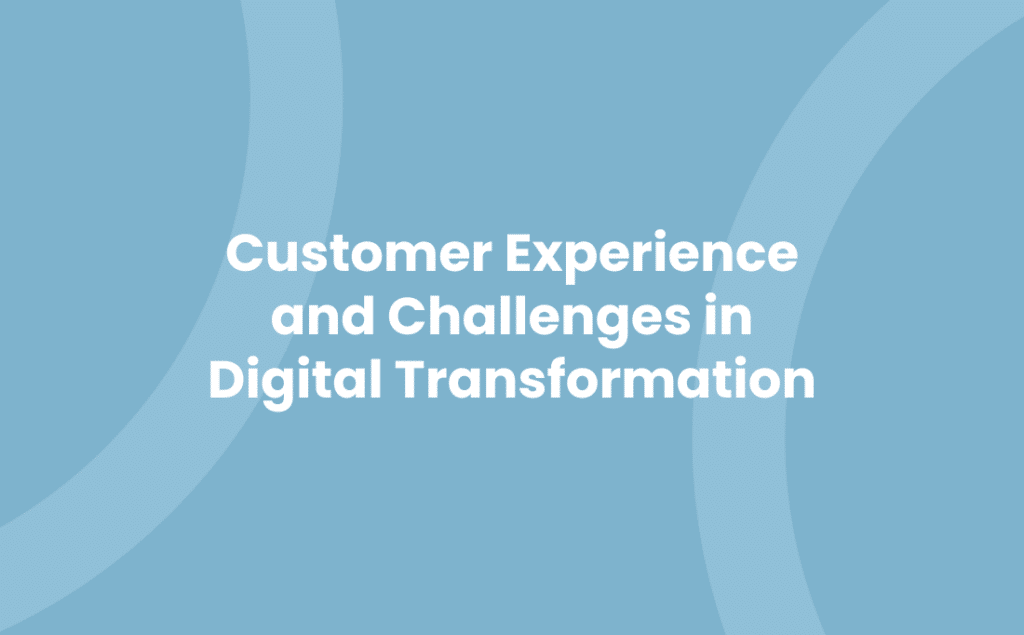Customer experience is undergoing a revolutionary transformation. As you navigate this dynamic landscape, it’s essential to understand how digital transformation is reshaping customer interactions, expectations, and overall experiences.
From online shopping to AI-powered customer service, digital innovations are not just changing the game; they’re redefining it. But what does this mean for your business? And more importantly, how can you leverage these changes to deliver an unparalleled customer experience?
This article will explore these questions, delving into the heart of digital transformation and its profound impact on customer experience. We’ll shed light on the emerging trends and offer practical insights to help you stay ahead of the curve. Let’s embark on this exciting journey together.
Understanding Digital Transformation
Digital Transformation represents a foundational shift in how businesses operate and deliver value to customers. Essentially, it’s the process of leveraging digital technologies to rethink old operating models, influence customer behaviour, and provide new and improved experiences. Understanding Digital Transformation means embracing change, applying new technology solutions and continually iterating to stay ahead in today’s hypercompetitive market.
When we talk about Digital Transformation, it encompasses a broad scope. It involves everything from the optimisation of business processes to the creation of new digital business models. But, at its core, it’s about using digital technology to improve your business.
Impact of Digital Transformation on Customer Experience
In recent times, there’s been a seismic shift in how businesses manage customer experience. Companies now realise that, for true digital transformation to occur, enhancing ‘customer experience’ becomes a key driver. Seamless and engaging customer journeys are no longer a nice-to-have; they’re a business necessity.
Adopting powerful digital tools presents you with new ways to listen to and communicate with your customers. CRM systems, social media platforms, data analytics, and AI-powered chatbots provide insights into your customer’s wants, needs, and behaviour. Thanks to digital transformation, you can harness this data to create more meaningful, personalised experiences that drive customer loyalty.
Formulating Your Digital Transformation Strategy
To succeed in the digital age, it’s crucial to devise an effective Digital Transformation strategy. Your strategy must align with your business objectives and outline your approach towards adopting digital tools. Moreover, it must encompass a clear roadmap that connects your business processes to digital technologies.
On top of this, your strategy should establish metrics to measure the success of your digital initiatives. Factors such as customer satisfaction scores, Net Promoter Score (NPS), and conversion rates can be critical indicators of your progress.
Understanding and implementing Digital Transformation opens up opportunities to meet evolving customer expectations, streamline operational efficiency, and stay competitive in the market. As you embark on this transformative journey, prioritising customer centricity and constantly revisiting your strategy may become rewarding.
The Core of Digital Transformation: Customer Experience
Going deeper into Digital Transformation, it’s plain to see Customer Experience (CX) standing as its core, an anchor adeptly holding the transformative processes together. Digital transformation CX isn’t a mere adjunct, but rather a magnetic nucleus centred at heart of corporate change, mediating the interaction between business and customer.
First, grasp the concept of personalisation in digital customer experience. Technology allows businesses to provide personalised solutions and recommendations based on customer behaviour and preferences. Think of it as having a profound conversational understanding with your clientele, learning from every interaction.
Second, take into account the value of convenience on digital platforms. Customers expect smooth interactions, streamlined processes and easy access to information. Tesco, a UK retail giant, showcases this by offering convenient online shopping, easy-to-navigate mobile applications and efficient home deliveries. They’ve optimised their interface for a smooth customer journey, from browsing to checkout.
Third, consider consistency across all digital channels. Regardless of whether your customers are interacting with your business via an app, web portal or social media, the quality and ease of customer experience remain paramount. For instance, Domino’s ensures a seamless ordering process across various digital platforms.
Moreover, don’t overlook the importance of speedy responses. Customers demand quick solutions to their queries or problems, hence, efficiency in service provision can significantly elevate the customer experience. Amazon UK, other than selling products, excels at fast customer service responses.
Last, but far from least, don’t negate the impact of customer feedback in evolving your business. Constant iterations and refinements based on customer input harness the actual power of digital transformation. Barclays Bank in the UK exhibits this by regularly updating their mobile banking features aligned with customer feedback.
At the crux, digital transformation pivots around enriching customer experiences. Adopting a customer-centric approach, incorporating technology per user expectations and using feedback for improvements solidifies your foothold in the digital landscape. The primary goal is quality interactions that leave a lasting impression, after all, a happy customer is an ambassador for the brand.
Key Components of Digital Transformation Customer Experience
To excel in today’s digitally powered business environment, understanding and implementing the key components of Digital Transformation Customer Experience (DX CX) bears great importance. Here are the critical elements you must know:
- Strategic Alignment: Every decision in your digital transformation journey aligns with overarching business goals. Be it incorporating a new digital channel, deploying advanced tech solutions or merely upgrading existing systems, the aim remains to enhance the customer experience.
- Personalisation: Today’s customer seeks more than just service, they value experiences. In response, businesses are formulating personalised consumer interaction approaches. Leveraging Artificial Intelligence (AI) and data analytics refine this process, making customers feel uniquely valued.
- Omni-Channel Presence: Consistency across all digital platforms is crucial. It’s not about being everywhere, but providing a seamless and integrated experience across the channels your customers use. This consistency fosters trust and promotes brand loyalty.
- Speed and Efficiency: In the realm of digital business, time equals trust. Rapid responses and quick solutions are not merely convenient‚ they are essential. It’s advisable to automate processes like chatbots to respond to customer queries and deliver speedy service.
- Data Analysis and Insights: Effective digital transformation relies heavily on data. Gathered customer data can help you understand their preferences, behaviours, and pain points, thereby driving strategic changes beneficial to both your business and your customers.
- Security and Trust: In the digital landscape, customer trust underpins success. Ensuring data security and being transparent about its use is paramount.
- Customer Feedback Loop: The everlasting journey of digital transformation requires an ever-evolving approach. Establishing a feedback loop provides insights into customer needs, satisfaction levels, and overall experience, steering your digital transformation efforts towards more customer-oriented strategies.
By embracing these components, business owners can navigate the complexities of digital transformation, enhancing their business’s customer experience. Implementing this customer-centric approach becomes less daunting, unveiling the secrets to thrive in the digitally competitive market.
Case Studies of Successful Digital Transformation Customer Experience
Progressive companies have exhibited truly how digital transformation can revolutionise the customer experience (CX). Let’s walk through two case studies which will demonstrate this phenomenon coherently.
1. Amazon: Personalisation at its Best
Amazon uses data analytics and AI to bring about an unmatched personalisation in its customer experience. For instance, it provides recommendations based on past preferences. The jeopardy of being overwhelmed by options is offset by a personal touch, often leading to higher customer satisfaction.
2. Netflix: Streamlined Omnichannel Experience
Netflix boasts an impeccable omnichannel experience. Viewers can initiate a show on one device, and continue on another without any hiccups. This effective use of digital transformation fosters an easy and seamless CX that customers appreciate.
How can we gather a conclusion out of these illustrations? It’s by spotting a shared determinant – an unrelenting commitment to put the customer first and serve the customer better. Companies that seek to excel in today’s digital landscape are the ones that invest in digital transformation in CX. They understand the importance of strategic alignment and use technology to provide personalised experiences, steadfast omnichannel presence, security, and efficiency in their responses.
Challenges and Solutions in Digital Transformation
Venturing into digital transformation presents an array of hurdles, some even risking your customer experience. Regardless, overcoming these hitches is possible, given the right approach. This section focuses on the primary challenges you may encounter during your digital transformation journey and their apt solutions.
Firstly, data security often emerges as a significant concern. Integrating digital processes entails increased customer data usage. A single breach can severely damage your organisation’s reputation and customer trust. Adopting high standard security measures becomes essential. Work on rigorous testing, encryption, and routine system updates to uphold security levels and protect your customer data.
Secondly, lack of strategic clarity can impede the smooth execution of digital transformation. Understanding your business objectives and aligning them with your digital strategy ensures a coherent path to follow. A well-defined strategy not only guides your progression but also helps in measuring success against the set goals.
Thirdly, resistance to change within your organisation can obstruct the transformation process. Employees comfortable with traditional methods may find the transition daunting. In this regard, conducting robust training sessions and workshops can foster digital understanding and acceptance. Gradually, the apprehension subsides, paving the way for a successful transition.
Lastly, delivering consistent and engaging customer experiences across all channels can be a challenge. The solution? Invest in top-notch customer experience digital technologies. Such technologies allow businesses to create personalised, seamless experiences across all touchpoints.
Digital transformation CX has its fair share of challenges. However, getting past them leads to substantial rewards. A detailed strategy, substantial security measures, employee education, and the right technologies ensure a robust and customer-centric digital transition. This transformation ultimately aids in delivering high-quality experiences that your customers long for.
Conclusion
You’ve seen how digital transformation can revolutionise customer experiences, with giants like Amazon and Netflix leading the way. It’s clear that embracing change, harnessing technology, and aligning digital strategies with business goals can propel your company to new heights. But it’s not without its challenges. Data security, strategic clarity, resistance to change, and maintaining consistency in customer experiences are hurdles you’ll need to overcome. By implementing robust security, providing training, and investing in the right technologies, you can navigate these obstacles successfully. Remember, a customer-centric approach is key. Let digital transformation enhance your customer experiences, and watch your business thrive in the digital age.



